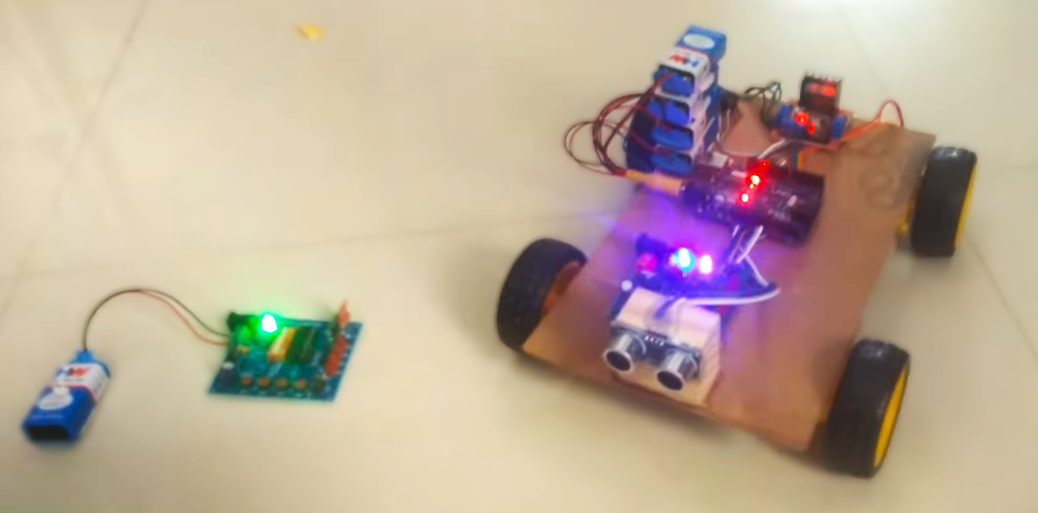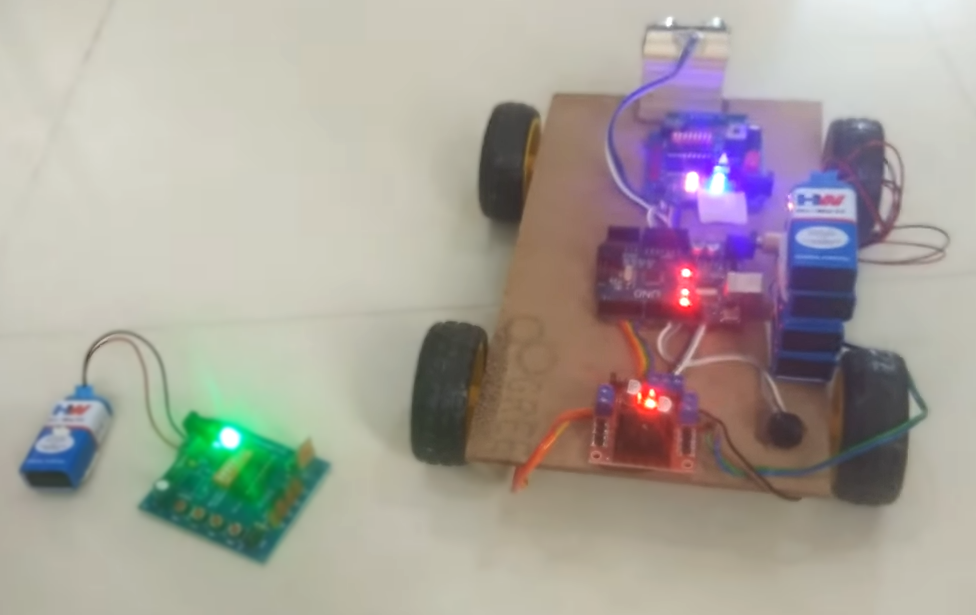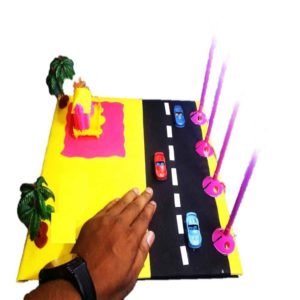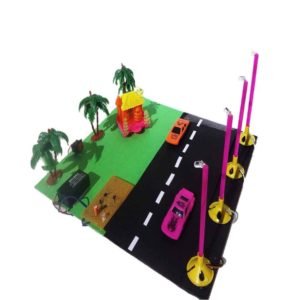Wireless Remote Controlled Vehicle integrates a collision prevention system, ensuring safe maneuverability in various environments. Its components include an Arduino UNO, HT12E Encoder IC, RF transmitter and receiver, HT12D Decoder IC, ultrasonic sensor, motor driver L293D ICs, gear motors, batteries, chassis, and wheels.
Features:
- Wireless remote control operation for enhanced convenience and flexibility.
- Collision prevention system utilizing ultrasonic sensor technology.
- Modular design with easily replaceable components for simplified maintenance.
Components:
- Arduino UNO: Central microcontroller unit for processing and controlling vehicle operations.
- RF Transmitter and Receiver: Enable wireless communication between the remote control and the vehicle.
- Ultrasonic Sensor: Detects obstacles and triggers collision prevention measures.
- Motor Driver L293D ICs: Control the speed and direction of gear motors.
- Batteries: Power source for both the vehicle and the remote control.
- Chassis and Wheels: Provide the structural framework and mobility for the vehicle.
Working:
- The RF transmitter sends control signals from the remote control to the RF receiver on the vehicle.
- The Arduino UNO processes the received signals and controls the movement of the vehicle’s gear motors accordingly.
- The ultrasonic sensor continuously scans the surroundings for obstacles.
- If an obstacle is detected, the Arduino triggers the collision prevention system to halt or change the vehicle’s direction to avoid a collision.
Application:
- Education: Demonstrates principles of wireless communication, sensor integration, and collision avoidance.
- Hobbyists: Provides an engaging project for DIY enthusiasts interested in robotics and remote-controlled vehicles.
- Industrial: Potential applications in automated guided vehicles (AGVs) for material handling and logistics.
































